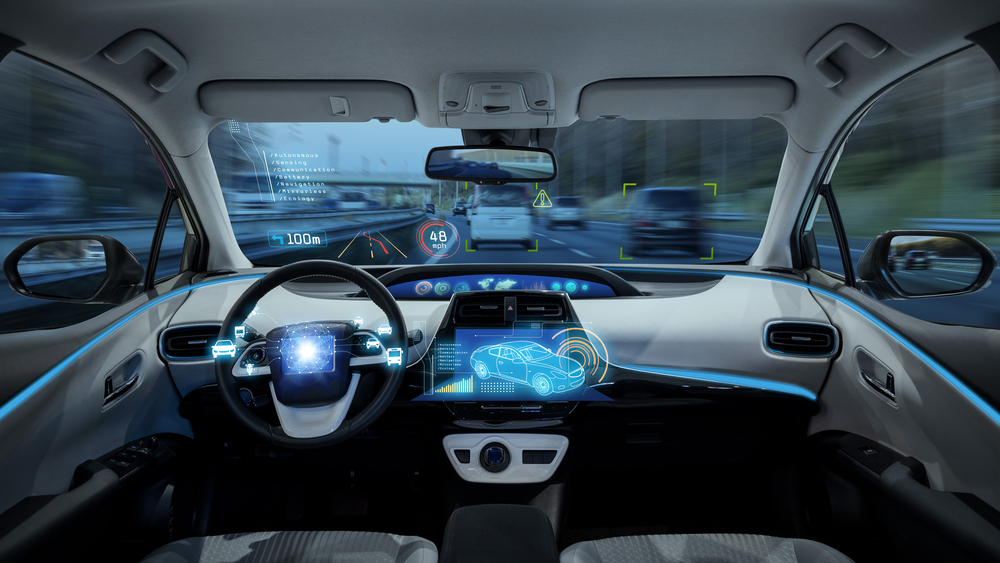
Blog
Delve into the world of Hi-Tech and its latest trends. Explore and learn!

Everywhere on the world eagerly waiting for self-driving cars and scientists thought this vehicle fulfills clients' needs, particularly the individuals who feel bore on driving or restless driving.
But in some places, the road has already been opened and is being used based on geological conditions, a fully functional navigation system, and other factors. It is suitable for people of all ages and does not require a driver's license.
Self-Driving Cars are the wave of a rapidly approaching future that is already adding rising amounts of "smart" technology to vehicles such as cars and trucks, and could eventually make passengers of everyone in a vehicle. Smart vehicles, according to experts, will make roads exponentially safer by eliminating the automobile's weak link, the human driver. According to a June study by professional services firm KPMG on the effect autonomous vehicles would have on the insurance industry, accidents will drop by 90% by 2050.
This can be achieved, according to those involved in the study, because artificial intelligence and machine learning will make the computer "brain" driving autonomous cars and trucks to make much better decisions than humans, who currently account for 94 percent of car accidents.
The advantages of self-driving cars are safe for travel (normal humans like take risks means rash driving but autonomous car obey rules and control the speed of the vehicle and able to sleep at night time), save time, avoid traffic systems (time is money) (possible to reduce in peaks times in busy streets), automobile Parking space (not finding parking in cities), increase car life, save fuel or electricity, reduce vehicle thefts, and pollution-free.
Fully self-driving car technology, along with the increasing spread of high-tech driver assistance advantages such as lane-departure warnings and automatic braking, are being hailed as game-changing ways to decrease road deaths. Advocates say that self-driving cars can also move more efficiently and reduce containment and pollution and transport elderly and disabled people who cannot drive today's conventional vehicles and are capable of communicating via the internet and local wireless networks.
The term "autonomous," mainly includes car, truck, or transit vehicles that can navigate on roads, make key choices themselves, and have communication connectivity. A variety of capacities and technologies include "Autonomous." self-driving cars on the road are still able to take control of a person in the vehicle today when necessary. But this may not be necessary in the future. By 2050, or perhaps even sooner, fully autonomous cars could be used without the steering wheel, brake and acceleration pedals or a driver.
The famous novelist William Gibson probably was not first person in history to see this phenomenon, but was the one who in the early 1990s put this phenomenon: "The future is already here, it's just not very evenly distributed."
Right now, a lot of cars have a certain type of self-drive available – but only new cars and still the costliest models have the best features, with driving features that often cost you a thousand dollars over the cost of an already expensive new car.
The high entry cost to the self-driving world currently limits the distribution. However, with technological maturity and the support of sensor and computing technologies becoming more widely used in other industries, the infrastructure needed to reduce cost of self-driving levels 1 and 2 is already coming online, promising to bring the costs of these technologies up to more purchasers. This is similar to the current autopilot implementation of Tesla.
However still, that word—buyers. New cars. You'd better have some money to spend if you wanted to participate in the autonomous revolution, because that is not a free revolution, and that isn't for everyone.
That might be a good thing, though: according to surveys by Pew Research Center, most Americans seem to be a little afraid of self-driving cars.
In America already there is a 'digital divide,' which describes how the future now differs: Accommodating a household income of less than $30,000 per year, Pew says that almost a third of American adults do not own a smartphone and that only slightly over a half own a desktop or Laptop. In contrast, households with an annual income of $100,000 or more are 97 percent Smartphone owners and 94 percent Desktop or Laptop owners. As the technology we use for working, living and moving in our everyday lives becomes increasingly expensive, the gap is only wider. Self-driving (or semi-self-driving) cars are among the most expensive consumer technologies. The real gem here is the fact that it's the hyper-wealthy will continue to accrue power and privilege, so that they are able to say literally to their computer-driven cars that they can run through people with a switch.
The greatest safety advantage of a self-driving cars is that a robot is not human – it has been programmed to comply with all road rules, will not speed or distract itself by flicking a text message onto the phone. And self-driving cars can also hypothetically detect, at least in lowlight or especially at night, what humans cannot do and react faster in order to avoid colliding.
Self-driving cars are laden with software and sensors that work simultaneously to build a complete road picture together. LIDAR or a "light detecting and ranging" sensor is one a key technology for self-driving cars. LIDAR draws a 3D, real-time image of the car's environment with the use of millions of lasers. Besides LIDAR, the size and speed of moveable objects can be measured by radar sensors. And HD cameras can actually read signals and signs. As the car moves, it crosses all this information with GPS technology, which locates the car in a town and helps plan its route.
Moreover, the maps and sensors, self-driving cars run software programs to decide in real time how the car navigates in relation to other cars, people or objects along the way. Engineers can use simulations to run cars, but the software must also learn about actual driving situations. This is why it is so important to test real life on public roads.
But how self-driving car companies collect this information led to greater concern about how self-driving cars could detect and prevent vulnerable road users, such as cyclists and people moving slowly and erratically through streets, such as seniors and children.
Self-driving car companies are also able to test their cars using simulated city streets through endless tests. Many traditional automakers use a facility called M City in Ann Arbor, Michigan,
But many larger self-driving companies have built their own fake towns, specifically to test interactions with people who are not in vehicles.
Waymo's fake city, called the Castle, even has a shed of props — such as tricycles — that people can use on the streets so that Waymo’s engineers can learn how to identify them.
The advent of fully self-driving cars could be a couple of years, but companies make enormous bets on the ultimate self-driving car kind. How will self-driving cars make decisions, feel the environment and protect the people they transport? Incumbents that seek to shape—and maybe control—a legion of resourceful, competitive players are confronting the strategic elements of this industry to even give the best-placed insider a run for its money. Given the frenetic pace of the self-driving car industry, companies looking for a piece of this pie must strategically position themselves to capture it now, and regulators must catch up to ensure public safety without hindering the innovation process.